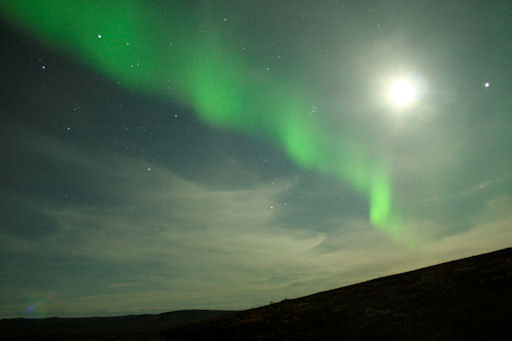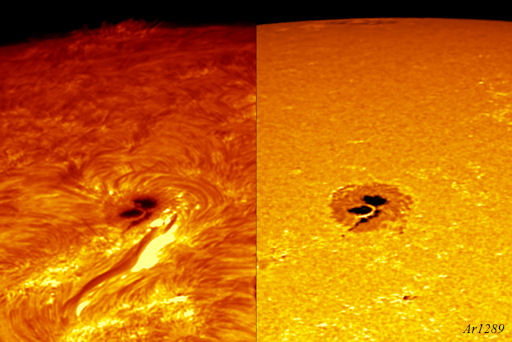COOL VIDEO FROM THE ASTEROID BELT: A just-released video from NASA's Dawn spacecraft takes viewers on a beautiful flyover of the giant asteroid Vesta. Buckle your seatbelt and watch the movie.
GEOMAGNETIC STORM: As predicted by analysts at the Goddard Space Weather Lab, a coronal mass ejection (CME) hit Earth's magnetic field at ~03:30 UT on Sept 17th. The impact sparked a moderate geomagnetic storm (subsiding) and auroras around the Arctic Circle. John Dean sends this picture from Dexter, Alaska:
"The auroras were spectacular at times, with a lot of rayed bands, coronas and arcs," he says. "This is the first time I have ever seen auroras around me 360 degrees."
High-latitude sky watchers should remain alert for auroras tonight as Earth's magnetic field continues to reverberate from the CME's impact. Aurora alerts: text,voice.
More Images: from Michael Kunze flying 30,000 ft over Greenland; from Chad Blakley of Abisko National Park, Sweden; from Joseph Bradley of Whitehorse, Yukon
GOODBYE SUNSPOT 1289: This weekend, big sunspot AR1289 is approaching the sun's western limb where it will soon disappear from view. Jesús Carmona de Argila of Madrid, Spain, captured these parting shots on Sept. 17th:
The image on the left was taken through an "H-alpha" filter tuned to the red glow of solar hydrogen. It reveals a long magnetic filament trailing the sunspot's dark core. This structure has prompted some observers to nickname AR1289 "the tadpole." The image on the right was taken through a white light filter. It shows the sunspot as the human eye would see it if the sun weren't so blindingly bright. The departing sunspot, while photogenic, poses little threat for Earth-directed flares.
Provided by Space Weather News


No hay comentarios:
Publicar un comentario